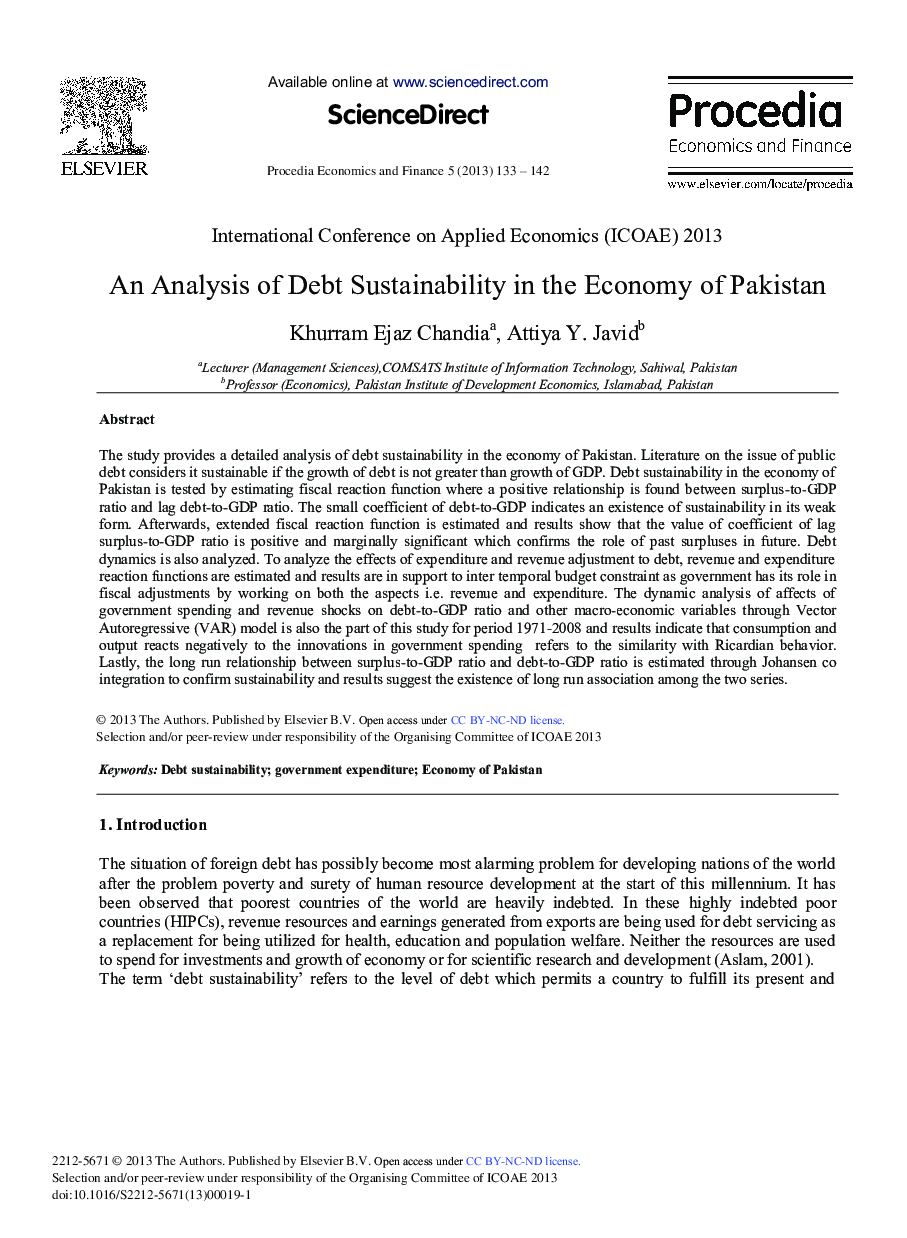| کد مقاله | کد نشریه | سال انتشار | مقاله انگلیسی | نسخه تمام متن |
|---|---|---|---|---|
| 981902 | 1480396 | 2013 | 10 صفحه PDF | دانلود رایگان |

The study provides a detailed analysis of debt sustainability in the economy of Pakistan. Literature on the issue of public debt considers it sustainable if the growth of debt is not greater than growth of GDP. Debt sustainability in the economy of Pakistan is tested by estimating fiscal reaction function where a positive relationship is found between surplus-to-GDP ratio and lag debt-to-GDP ratio. The small coefficient of debt-to-GDP indicates an existence of sustainability in its weak form. Afterwards, extended fiscal reaction function is estimated and results show that the value of coefficient of lag surplus-to-GDP ratio is positive and marginally significant which confirms the role of past surpluses in future. Debt dynamics is also analyzed. To analyze the effects of expenditure and revenue adjustment to debt, revenue and expenditure reaction functions are estimated and results are in support to inter temporal budget constraint as government has its role in fiscal adjustments by working on both the aspects i.e. revenue and expenditure. The dynamic analysis of affects of government spending and revenue shocks on debt-to-GDP ratio and other macro-economic variables through Vector Autoregressive (VAR) model is also the part of this study for period 1971-2008 and results indicate that consumption and output reacts negatively to the innovations in government spending refers to the similarity with Ricardian behavior. Lastly, the long run relationship between surplus-to-GDP ratio and debt-to-GDP ratio is estimated through Johansen co integration to confirm sustainability and results suggest the existence of long run association among the two series.
Journal: Procedia Economics and Finance - Volume 5, 2013, Pages 133-142